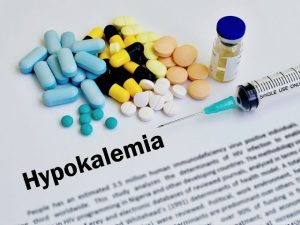Potassium-sparing diuretics, also known as aldosterone inhibiting diuretics, have weaker diuretic and antihypertensive effects than other diuretics. But they have the advantage of conserving potassium, so hypokalemia does not occur.
Mostly, they are combined with other diuretics to potentiate their action or counteract potassium wasting.
With potassium-sparing diuretics, you have to monitor serum potassium because they possess the risk of hyperkalemia. Therefore these drugs should be used cautiously in moderate renal dysfunction and avoided in patients with severe renal dysfunction.
The potassium-sparing diuretics include:
- Spironolactone
- Eplerenone
- Triamterene
- Amiloride
They act on the collecting ducts and distal tubules of the kidneys. That results in the urinary excretion of sodium, water, bicarbonate, and calcium. Moreover, they also decrease the excretion of potassium and hydrogen ions, leading to reduced blood pressure and increased serum potassium levels.
Spironolactone is structurally similar to aldosterone, which promotes sodium and water retention and potassium loss.
Being its antagonist, spironolactone counteracts these effects by competing with aldosterone for receptor sites. Hence, sodium, chloride, and water are excreted, and potassium is retained.








